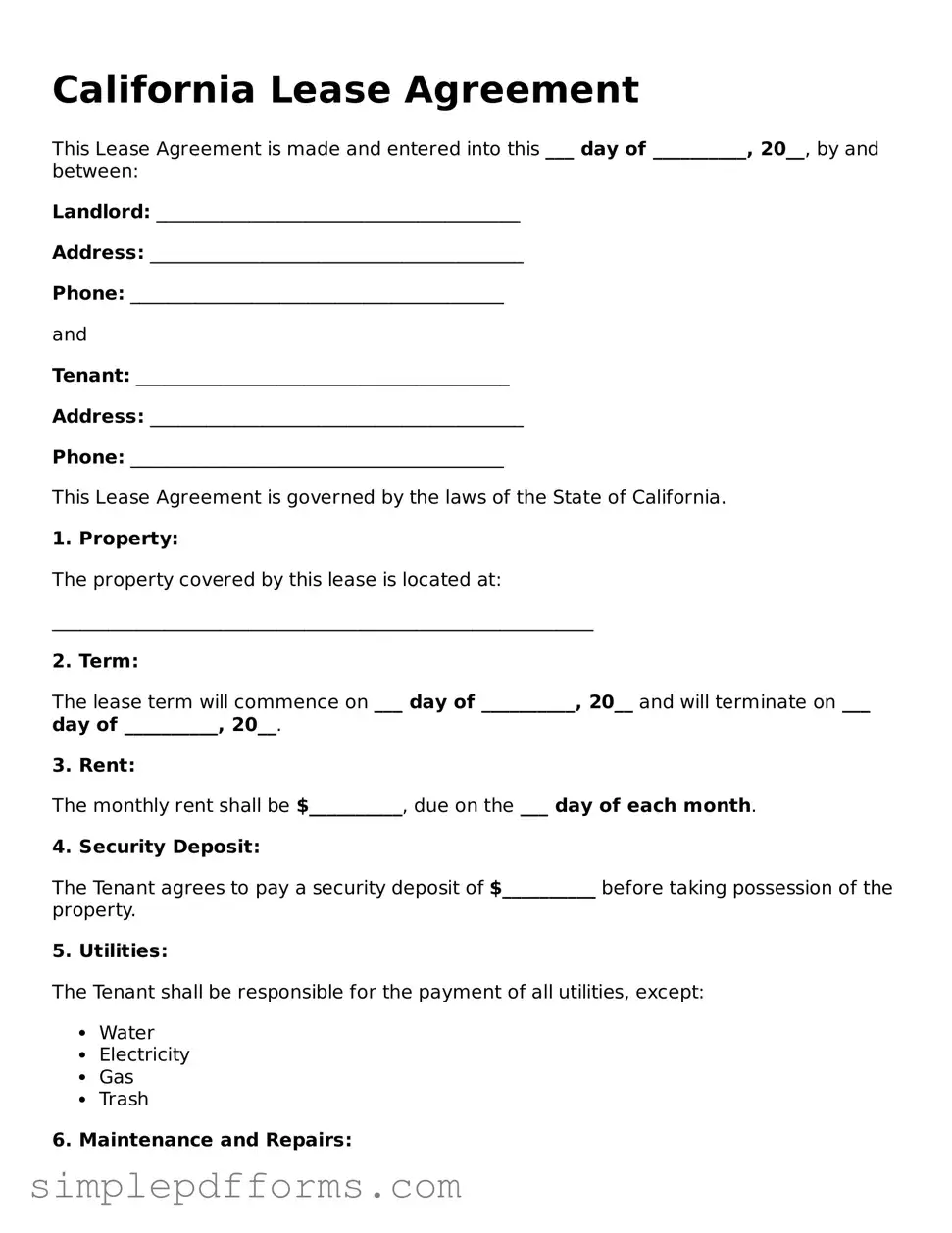California Lease Agreement
This Lease Agreement is made and entered into this ___ day of __________, 20__, by and between:
Landlord: _______________________________________
Address: ________________________________________
Phone: ________________________________________
and
Tenant: ________________________________________
Address: ________________________________________
Phone: ________________________________________
This Lease Agreement is governed by the laws of the State of California.
1. Property:
The property covered by this lease is located at:
__________________________________________________________
2. Term:
The lease term will commence on ___ day of __________, 20__ and will terminate on ___ day of __________, 20__.
3. Rent:
The monthly rent shall be $__________, due on the ___ day of each month.
4. Security Deposit:
The Tenant agrees to pay a security deposit of $__________ before taking possession of the property.
5. Utilities:
The Tenant shall be responsible for the payment of all utilities, except:
- Water
- Electricity
- Gas
- Trash
6. Maintenance and Repairs:
The Tenant agrees to maintain the property in good condition and report any repairs needed to the Landlord promptly.
7. Alterations:
The Tenant must obtain written permission from the Landlord before making any alterations or improvements to the property.
8. Pets:
The Tenant may keep pets on the property only if the Landlord provides written consent.
9. Governing Law:
This Lease Agreement shall be governed by and construed in accordance with the laws of the State of California.
10. Signatures:
The parties hereto have executed this Lease Agreement on the day and year first above written.
Landlord Signature: ___________________________ Date: ____________
Tenant Signature: ____________________________ Date: ____________
